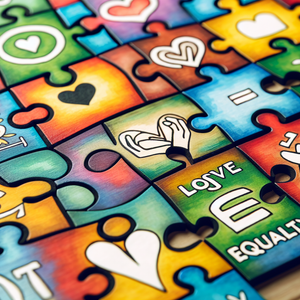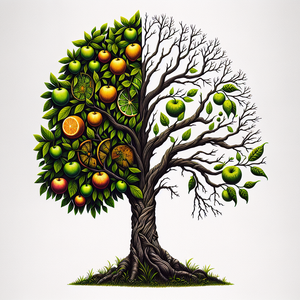The Evolution of Disney Villains

In the early days of Disney animation, villains were depicted as archetypal representations of evil. Characters like Cruella de Vil, the Evil Queen, and Captain Hook embodied exaggerated traits that clearly defined them as the opposition to the virtuous protagonists. These villains were often motivated by greed, jealousy, and a thirst for power, with little to no redeeming qualities. For example, the Evil Queen's obsession with beauty and her willingness to kill Snow White for it epitomizes a simplistic view of evil, one that resonated with audiences but lacked depth. Similarly, Cruella de Vil's desire for beautiful fur coats made her a symbol of vanity and cruelty, while Captain Hook's obsession with revenge against Peter Pan showcased a more straightforward, childlike understanding of villainy. These characters were effective in their roles as antagonists but offered little complexity or relatability, serving primarily as obstacles for the heroes to overcome.
The Shift Towards Complexity
As societal values evolved, so too did the portrayal of Disney villains. The 1990s ushered in a new era of storytelling, with characters like Gaston from "Beauty and the Beast" and Jafar from "Aladdin" showcasing not just villainy but also the complexities of their desires and motivations. Gaston, for instance, is driven by his insecurities and societal expectations of masculinity, making him relatable, albeit in a distorted way. His character reflects the toxic aspects of masculinity, illustrating how societal pressures can warp a person's sense of self-worth and entitlement. This nuanced portrayal allows audiences to explore the motivations behind villainy, reflecting the complexities of human nature. Jafar, too, is portrayed with layers; his cunning and ambition stem from a desire for power and recognition, making him more than just a caricature of evil. This evolution in character complexity marked a significant shift in Disney's approach to storytelling, allowing for more engaging and thought-provoking narratives.
Villains with a Backstory: Understanding Their Pain
In recent years, Disney has taken a bold step in reimagining its villains with films like "Maleficent" and "Cruella." These stories delve into the backgrounds of these characters, revealing the traumas and experiences that shaped them into the villains we know. "Maleficent," for example, reinterprets the tale of "Sleeping Beauty" from the perspective of the so-called villain, portraying her as a victim of betrayal rather than a one-dimensional antagonist. The film explores themes of love, loss, and vengeance, inviting audiences to empathize with the character. This fresh perspective challenges the conventional notion of good versus evil and encourages viewers to consider the experiences that lead individuals down darker paths. Similarly, "Cruella" offers a deep dive into the origins of its titular character, presenting her as a fashion-savvy young woman shaped by a troubled past. By focusing on her struggles for acceptance and recognition in a competitive world, the film intricately weaves a narrative that blurs the lines between hero and villain. These modern interpretations invite audiences to reflect on the complexities of human behavior and the societal factors that can influence one's choices.
Cultural Representation and Contemporary Issues
The evolution of Disney villains also reflects broader cultural shifts. As conversations around identity, mental health, and societal expectations gain prominence, Disney has begun to incorporate these themes into its storytelling. Villains like Scar from "The Lion King" and Ursula from "The Little Mermaid" serve as metaphors for marginalized voices and the struggle for acceptance. Scar’s character embodies themes of sibling rivalry and betrayal, highlighting the psychological impacts of familial dynamics. His tragic flaw—his desire for validation and power—resonates with audiences who might feel overlooked or undervalued in their own lives. Ursula, on the other hand, represents defiance against societal norms and the fight for individuality. As a sea witch who challenges the status quo, she becomes a symbol of empowerment for those who feel marginalized. By addressing issues such as sibling rivalry, societal rejection, and the quest for self-identity, these characters resonate with audiences on a deeper level, making them more than just evil antagonists. The portrayal of these villains encourages viewers to grapple with their own fears and societal challenges, allowing for a richer and more relatable storytelling experience.
The evolution of Disney villains from simplistic representations of evil to complex characters that reflect contemporary societal issues is a testament to the power of storytelling. As Disney continues to produce content that resonates with diverse audiences, it is essential to recognize the role that villains play in reflecting our fears, desires, and societal challenges. The shift towards multidimensional characters not only enriches the narratives but also encourages viewers to reflect on their own values and the complexities of the human experience. As we look to the future, one can only imagine how Disney will continue to redefine its villains, making them as unforgettable and intricate as the heroes they oppose. This ongoing evolution not only enhances the richness of Disney’s storytelling but also ensures that its narratives remain relevant and impactful in an ever-changing world.
Character Designer
Disney Animation Studios, Pixar, DreamWorks Animation
Core Responsibilities
Create original character concepts and designs that align with the narrative and emotional tone of projects.
Collaborate with writers, directors, and other artists to ensure character designs enhance storytelling.
Develop character sheets and turnarounds for 2D and 3D animation.
Required Skills
Proficiency in digital illustration software (e.g., Adobe Photoshop, Illustrator).
Strong understanding of anatomy, color theory, and visual storytelling.
Ability to adapt styles based on project requirements (e.g., children's animation vs. adult themes).
Cultural Consultant for Media
Major film studios, television networks, independent production companies
Core Responsibilities
Provide insights on cultural representation and sensitivity for character development and storylines.
Collaborate with creative teams to ensure authenticity in portrayal and dialogue.
Conduct research and present findings on cultural nuances and historical contexts.
Required Skills
In-depth knowledge of specific cultures, histories, and social issues.
Strong communication skills to articulate cultural perspectives to diverse teams.
Experience in consulting for film, television, or animation projects.
Screenwriter for Animated Features
Walt Disney Animation Studios, Blue Sky Studios, Laika
Core Responsibilities
Write scripts for animated films, focusing on character development, dialogue, and plot structure.
Revise scripts based on feedback from directors and producers, ensuring alignment with the overall vision.
Create character arcs that reflect complex motivations and societal themes.
Required Skills
Proven experience in screenwriting, particularly in animation.
Ability to construct engaging narratives that resonate with both children and adults.
Strong understanding of pacing and timing for animated storytelling.
Animation Director
Animation studios, independent film production companies, video game developers
Core Responsibilities
Oversee the animation production process, ensuring visual consistency and quality.
Lead a team of animators, providing guidance on technical and artistic aspects of animation.
Collaborate with writers and producers to align the animation style with storytelling goals.
Required Skills
Extensive experience in animation techniques (2D, 3D, stop-motion).
Strong leadership and communication skills to manage creative teams.
A portfolio showcasing a range of animation styles and completed projects.
Visual Development Artist
Disney, Studio Ghibli, Nickelodeon Animation
Core Responsibilities
Create concept art for characters, environments, and props that set the visual tone for animated projects.
Work closely with directors and production teams to establish the visual style and atmosphere of a film.
Develop mood boards and color scripts that guide the artistic direction of the project.
Required Skills
Proficiency in digital painting and concept design software (e.g., Adobe Creative Suite, Corel Painter).
Strong understanding of design principles, composition, and color theory.
Ability to translate narrative themes into visual concepts.


